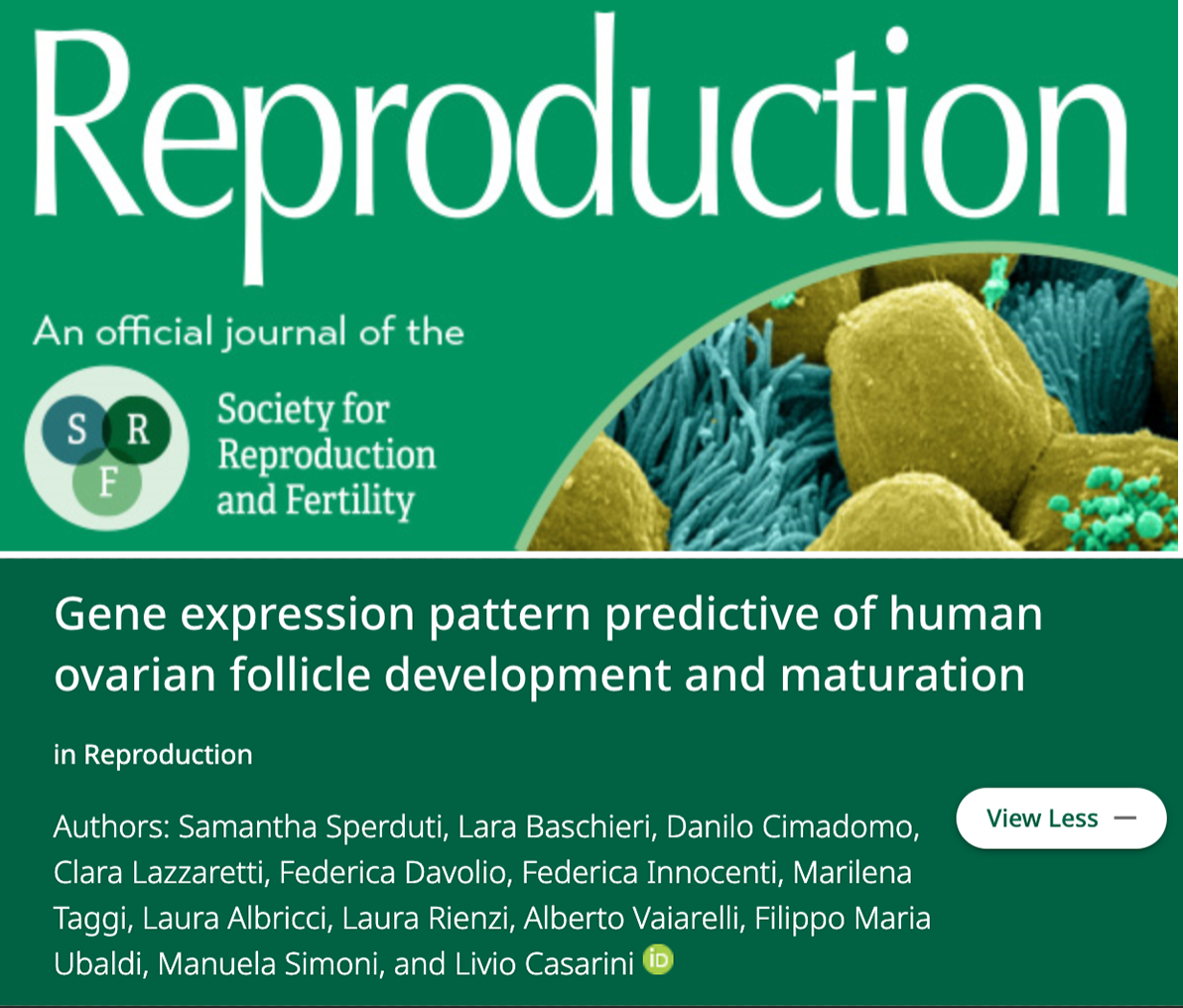
Samantha Sperduti, Lara Baschieri, Danilo Cimadomo, Clara Lazzaretti, Federica Davolio, Federica Innocenti, Marilena Taggi, Laura Albricci, Laura Rienzi, Alberto Vaiarelli, Filippo Maria Ubaldi, Manuela Simoni and Livio Casarini
Reproduction (2025) 170 e250176 https://doi.org/10.1530/REP-25-0176 Received 16 April 2025 – Accepted 14 July 2025 – Available online 15 July 2025 – Published 26 July 2025
Abstract
In brief: Granulosa cells from small antral follicles (SFs; diameter <10 mm), collected at the end of controlled ovarian cycles, differ from large ovarian follicles (LFs; >16 mm) for their molecular signatures. SFs retain characteristic of early antral follicles and the ratio between follicle-stimulating hormone receptor (FSHR) and G protein-coupled receptor (GPER) discriminates between mature and immature-like follicles.
Abstract: Ovarianfolliclematurationisregulatedbyanetworkofgenesinvolvedincellgrowth,differentiation,oocyte selection, and steroidogenesis. In this study, we compared the expression of developmental markers and intrafollicular steroid levels in granulosa cells from small (SFs; diameter <10 mm) vs large human ovarian follicles (LFs; >16 mm). Since samples were collected from both conventional ovarian stimulation cycles and the second phase of DuoStim protocol, differences between follicles of follicular and luteal origin were also evaluated. Although both SFs and LFs displayed periovulatory markers, such as LHCGR gene expression, SFs exhibited relatively high expression levels of early antral markers, i.e., FSHR, GPER, AMHR2, CCND2 and CYP19A1 genes. This was different in LFs, which have overall homogeneous gene expression pattern. Gene expression data reflect the capability to convert androgens to estrogens, which is higher in SFs than LFs. These differences did not change when follicles from conventional and the second stimulation of DuoStim protocol were compared, confirming previous clinical observations that suggested similar quality and outcomes from oocytes collected in different follicular waves. In conclusion, SFs and LFs exhibit distinct characteristics, including specific size, gene expression patterns, and steroidogenic capabilities, regardless of their follicular or luteal origin. According to previous reports, the FSHR/GPER ratio could discriminate between mature and immature-like follicles collected at the end of controlled ovarian cycles, and between two sub-populations of LFs.